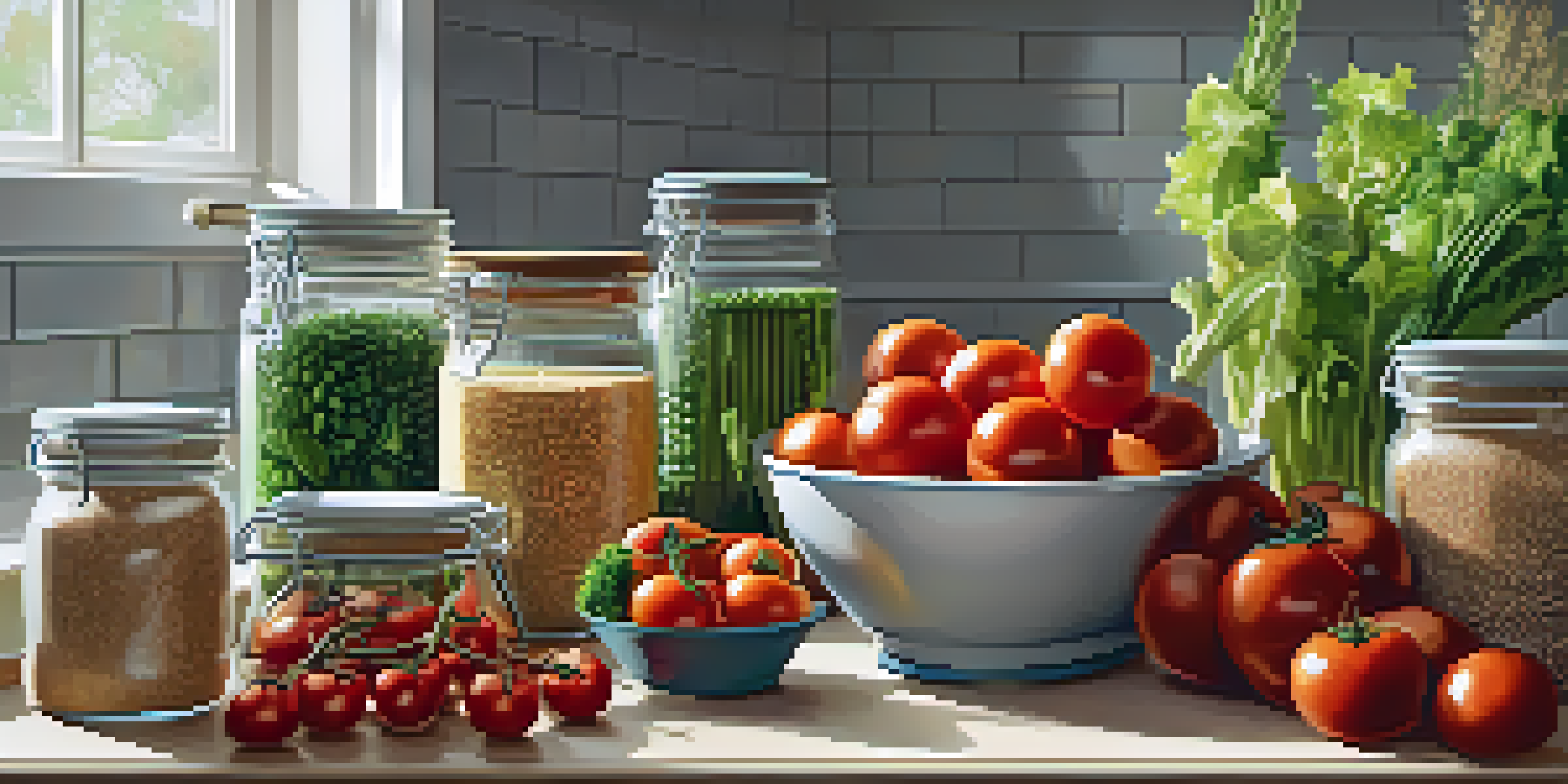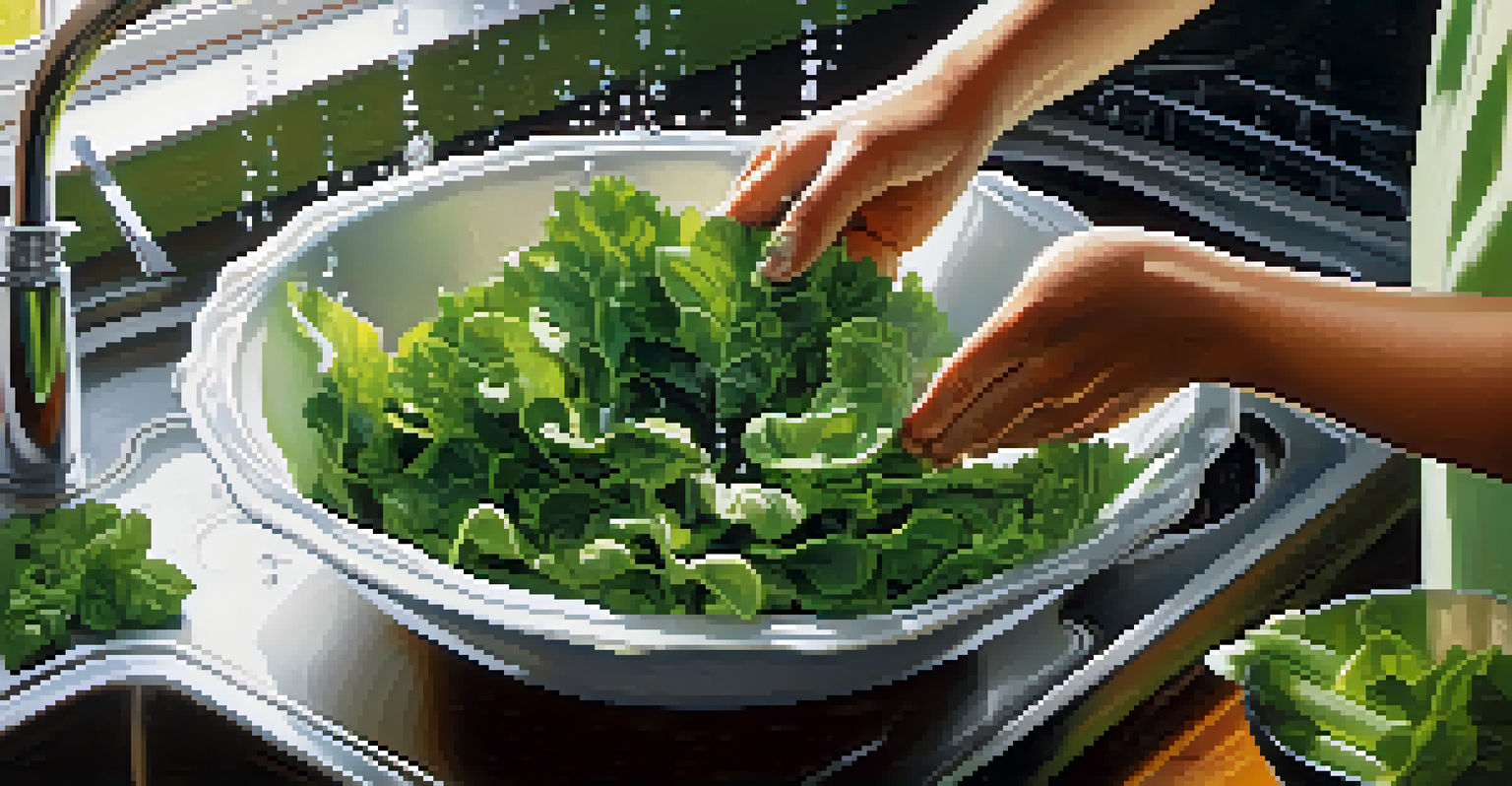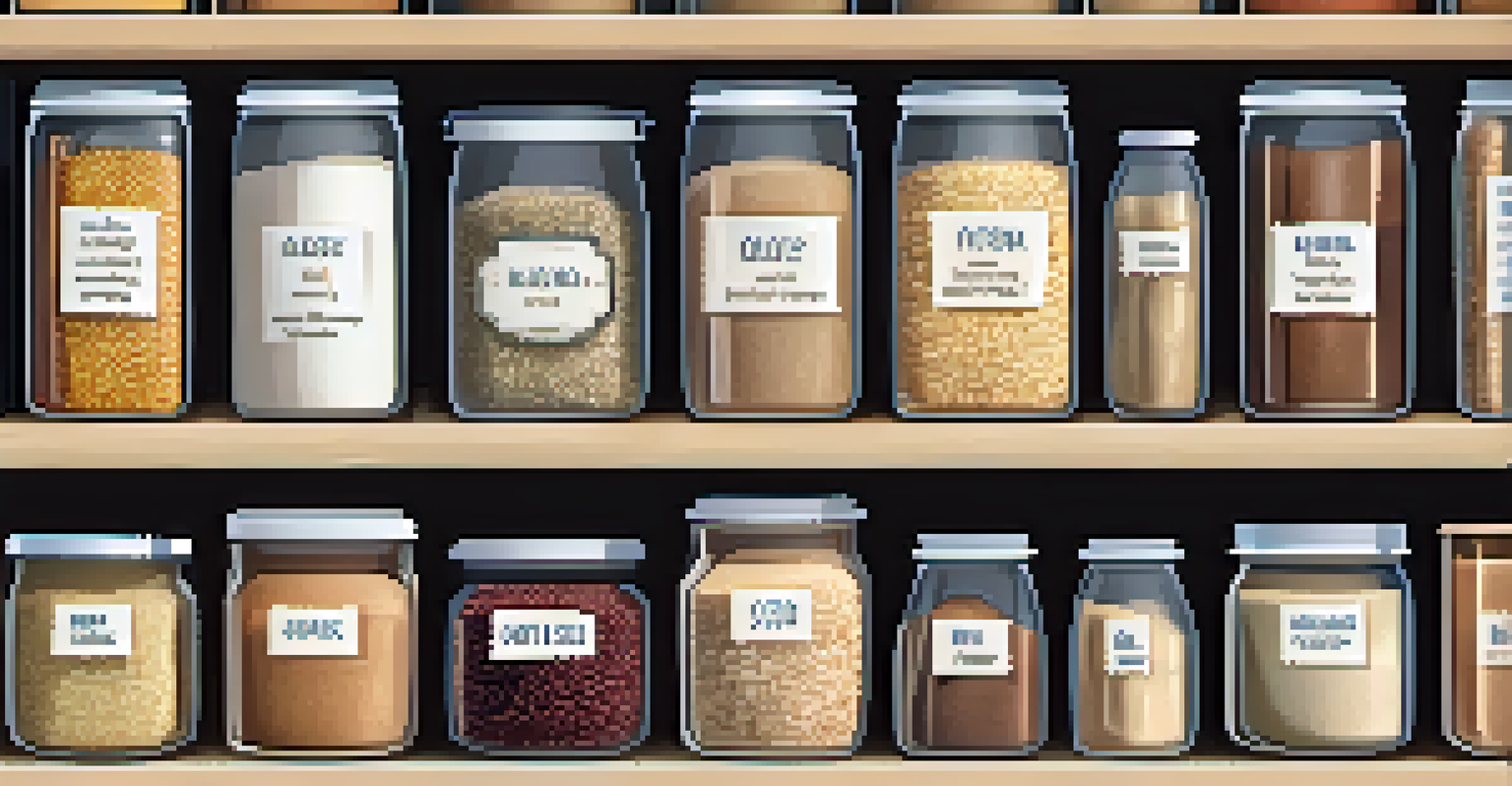Best Practices for Safe Vegetable and Grain Preparation

Understanding Food Safety Basics for Vegetables and Grains
Food safety is crucial when preparing vegetables and grains, as improper handling can lead to foodborne illnesses. Understanding the basic principles of food safety, such as cleanliness and proper cooking temperatures, is the first step in ensuring your meals are safe. Always wash your hands thoroughly before and after handling food, and keep your cooking area clean to minimize the risk of contamination.
Food safety is not an accident, it is a result of high intention, sincere effort, intelligent direction, and skillful execution.
Another key aspect is to separate raw and cooked foods. For instance, using different cutting boards for vegetables and raw meats can prevent cross-contamination. This simple practice can make a significant difference in maintaining food safety in your kitchen.
Lastly, remember to store leftovers promptly and at the correct temperature. Refrigerate or freeze perishable items within two hours of cooking to keep them safe for later consumption. By following these basic food safety practices, you set a solid foundation for safe vegetable and grain preparation.
Choosing Fresh and Quality Ingredients
When it comes to preparing vegetables and grains, the quality of your ingredients matters. Fresh produce not only tastes better but also retains more nutrients and has a lower risk of harboring harmful bacteria. Look for vibrant colors and firm textures when selecting vegetables, and opt for whole grains that are free from added sugars or preservatives.

Additionally, knowing where your food comes from can enhance your cooking experience. Local farmers' markets often offer seasonal produce that's fresher than supermarket options. Supporting local agriculture not only benefits your health but also the community.
Essentials of Food Safety Practices
Practicing cleanliness, separating raw and cooked foods, and proper storage are vital to prevent foodborne illnesses.
Don't hesitate to ask questions at the market or grocery store. Inquire about how the produce was grown and handled. This engagement not only helps you make informed choices but also fosters a deeper connection to the food you prepare.
Proper Washing Techniques for Vegetables
Washing vegetables properly is a crucial step in safe preparation. Start by rinsing them under cool running water to remove dirt and surface residues. For leafy greens, it’s a good idea to soak them in a bowl of water and gently agitate to dislodge any hidden grit or insects.
The food you eat can be either the safest and most powerful form of medicine or the slowest form of poison.
Using a clean vegetable brush can help scrub firm produce like potatoes or carrots. However, avoid using soap or bleach, as these can leave harmful residues on your food. A simple rinse is usually enough to ensure your vegetables are safe to eat.
Don’t forget to dry your washed vegetables with a clean cloth or paper towel. This helps remove any remaining bacteria and moisture, which can lead to spoilage. With these washing techniques, you can enjoy your veggies with peace of mind.
Safe Storage Practices for Vegetables and Grains
Storing vegetables and grains correctly is essential to maintaining their freshness and safety. For most vegetables, the refrigerator is the best place to keep them, as the cool temperature slows down spoilage. Use breathable bags or containers to allow for air circulation, especially for leafy greens.
Grains, on the other hand, should be stored in a cool, dry place. Airtight containers are ideal for preventing moisture and pests from ruining your grains. Labeling your containers with purchase dates can also help you keep track of freshness.
Choosing Quality Ingredients Matters
Selecting fresh, locally sourced vegetables and grains enhances flavor, nutrition, and supports local agriculture.
Always check for signs of spoilage before use. If you notice an off smell or unusual texture, it's best to discard the item. By implementing these storage practices, you can maximize the shelf life and safety of your ingredients.
Understanding Cooking Temperatures for Safety
Cooking vegetables and grains to the right temperature is vital for killing harmful bacteria. While most vegetables can be safely consumed raw, cooking them often enhances flavor and digestibility. For grains, ensure they reach the appropriate internal temperature, typically around 165°F, to ensure they are safe to eat.
Using a food thermometer can help you accurately measure temperatures. This simple tool takes the guesswork out of cooking, ensuring that your meals are not only delicious but also safe. For example, when cooking rice, make sure the water is fully absorbed and the grains are tender.
Additionally, remember that different cooking methods can affect food safety. For instance, steaming or boiling vegetables can be a safer option than frying, as it minimizes the risk of surface contamination. By being mindful of cooking temperatures, you can enjoy your meals with confidence.
Avoiding Cross-Contamination in the Kitchen
Cross-contamination is a serious concern in food preparation, especially when working with both vegetables and grains. Always use separate utensils and cutting boards for raw meats and plant-based ingredients. This practice helps prevent harmful bacteria from spreading and keeps your meals safe.
Labeling your cutting boards can be a helpful reminder; for example, designate one for vegetables and another for meats. This simple step can make a significant difference in maintaining a clean and safe kitchen environment.
Mindfulness Enhances Cooking Experience
Being mindful in the kitchen fosters a deeper appreciation for ingredients and promotes better food safety practices.
Moreover, regularly sanitizing your kitchen surfaces is essential. Wipe down counters and cutting boards with a disinfectant after each use to eliminate any lingering bacteria. By taking these precautions, you can effectively reduce the risk of cross-contamination.
Recognizing Signs of Spoilage in Vegetables and Grains
Knowing how to recognize signs of spoilage in vegetables and grains is crucial for safe food preparation. Look for visual cues like discoloration, mold, or an off smell, which can indicate that the food is no longer safe to consume. For example, if you notice slimy textures on leafy greens, it’s a clear sign they’ve gone bad.
Grains can also show signs of spoilage through unusual odors or the presence of bugs. Always check the expiration dates on packaging, and store grains in airtight containers to minimize the risk of pest infestations. If you ever have doubts about the safety of an ingredient, it's better to err on the side of caution.

Regularly inspecting your pantry and refrigerator can help you manage your inventory effectively. By being proactive about recognizing spoilage, you can ensure that you only use the freshest ingredients in your meals.
Importance of Mindfulness in Food Preparation
Mindfulness in food preparation goes beyond just safety; it enhances the overall cooking experience. Taking the time to appreciate the ingredients you’re working with can foster a deeper connection to your meals. It encourages a more intentional approach, where you focus on each step, from washing to cooking.
Engaging your senses can transform routine cooking into a joyful activity. Notice the vibrant colors of fresh vegetables, the aroma of herbs, or the texture of grains as you prepare them. This awareness not only makes the process more enjoyable but also promotes better food safety practices.
By cultivating mindfulness in the kitchen, you create an environment that values health and well-being. This holistic approach to food preparation can lead to more nutritious meals and a greater appreciation for the food you consume.